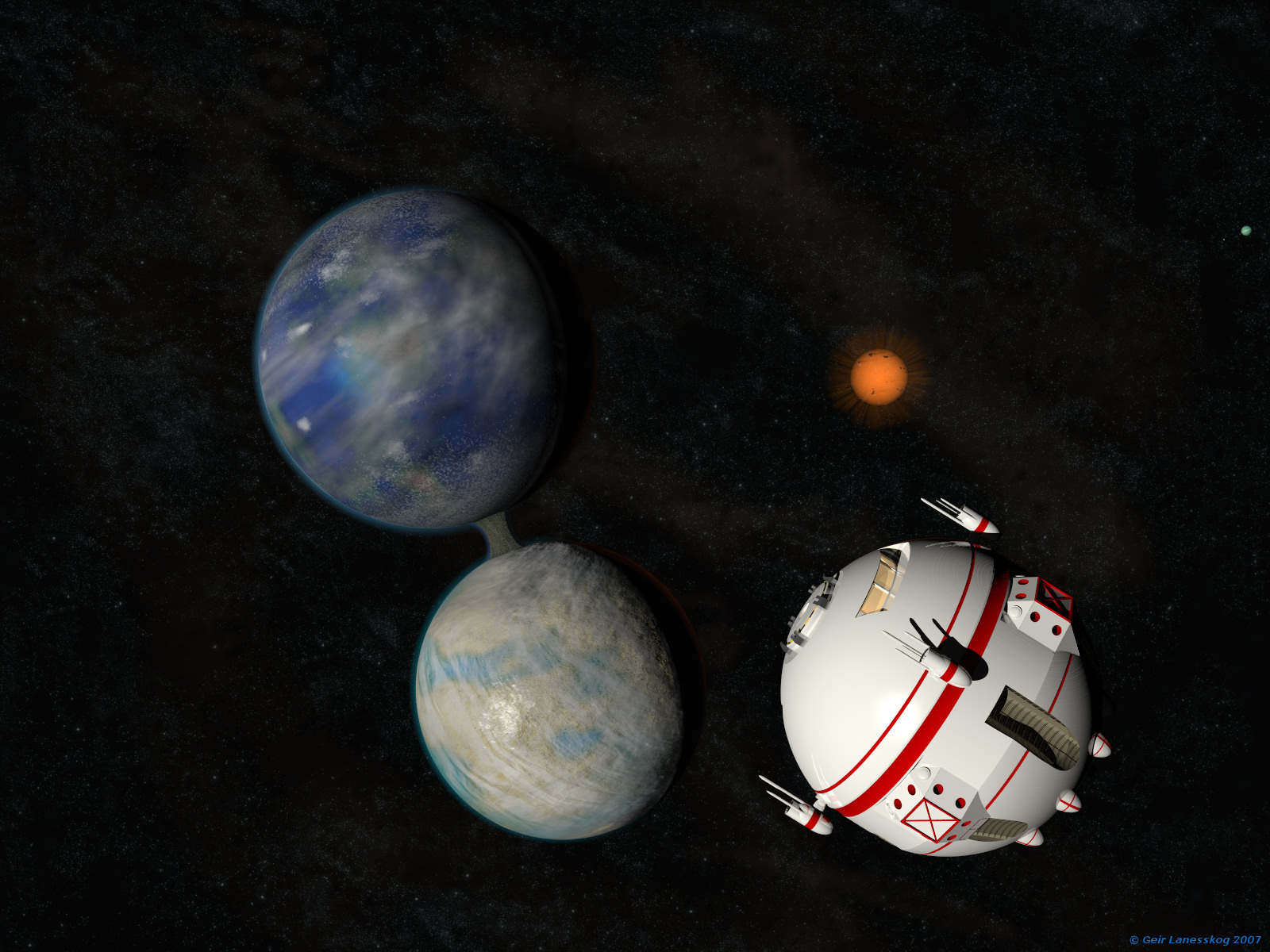
 |
|||||||
|
|
|
|
|
|
|

Chang and Eng
The Survey Office has a lot of work to do (there are over
16,000 stars within a hundred light years of Sol), and not enough money. After
the War, they decided the best way to meet their goals was through the use of
singleships. Now, at eight meters in diameter, they were about as small a
starship could get, and even for the single occupant, it wasn't exactly luxury
city. If there was a way to get any computer built after the dawn of the
twenty-first century to survive a jump while up and running, they would have
dispensed with the pilot too. But somebody has to run the checks and restart
everything. Of course, as Lathan Miles kept pointing out, they could have
trained a monkey to do it.
Typically we did a ten jump loop from a base site, giving each system a once
over to look for something interesting. Every system was unique. Even if it was
just a bunch of rocks and dust, there was always something a little unexpected
to keep you on your toes. But after a few loop tours, it got to be a little
routine. Singleships never got the prime systems anyway, normally just the
marginal Ks, odd doubles and low Ms.
It was the fourth jump of my tour in '85 when I popped into a double star
system: an F8 with a M3 about 1.6 AU out. It was listed as low habitability
probability, based on the red dwarf in the hab zone, but what I found was pretty
much unique. There was a pair of planets about a third of an AU off the red sun
- too far for life from their own sun, but the F8 warmed them nicely. Since the
M3's plane was nearly perpendicular to its orbit around the bigger sun, those
worlds got a fairly constant bit of light, too.
I found it strange that the only gas giant in the whole system was a runt closer
to the M3 than the twins, but as I got closer to those two worlds, my jaw hit my
cramped little deck. The damn things were conjoined! Link together by some braid
of tree-like things hundreds of kilometers high. The bigger twin looked like it
had the better ecosphere - more water and atmosphere anyway, but they were both
living worlds.
And if that wasn't weird enough, what my probes found when they landed was even
stranger...
-from Jaynee Fourier's Memoirs of a Lonely Scout, Chiron Press 2298
All pages and images ©1999 - 2007
by Geir Lanesskog, All Rights Reserved
Usage Policy
![]()